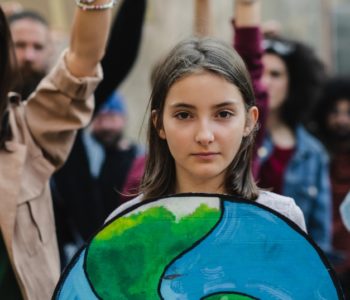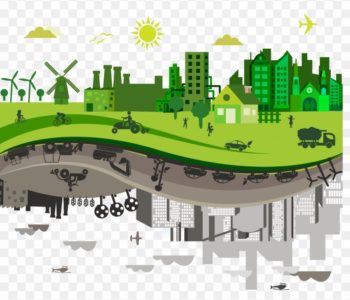
The danger of climate change
C
limate change (CC), which are changes that occur in the global atmosphere, shows a clear variation in either the state of the climate or its fluctuations. The CC that occurs on Earth usually continues for long periods of decades or more. CCs have begun since the formation of the earth, as the earth has gone through many climatic changes such as ice ages and heat waves that have taken over the earth for millions of years, as ice caps and forests spread, and sea levels rose and decreased, and all of this is mainly due to climatic changes. It is worth noting that it must differentiate between climatic changes and weather diversity, as climatic changes last for very long periods, while weather changes last for relatively short periods 1,2.
CC has a serious effect on the environment include effects on Global warming, crops, water resources, the strength of hurricanes, increasing drought, and human health. CC is one of the most important reasons that affect the environment, as droughts and changing global rainfall patterns can destroy livelihoods. In addition to the spread of dangerous diseases such as malaria and dengue fever. It is worth noting that climatic changes affect the natural wild habitats. As well as it creates crises that are difficult to recover from 3.
CC contribute to the increase in the average temperature of the Earth’s surface by more than 0.9 degrees Celsius since 1906. Human activities are the basis of increasing Global warming, which contributes to the addition of greenhouse gas to the atmosphere leading to a rise in the global temperature. This rise led to melting of glaciers and sea ice, change in rainfall patterns, rising Sea levels, destruction of some wild habitats, and migration of animals to cooler regions 4.
CCs such as changes in temperature, weather intensity, and the proportion of carbon dioxide in the atmosphere affect agricultural crops significantly, as these changes can affect the increase or decrease in the number of crops planted according to the type grown and the conditions required for them to grow. The most important effects of CC on crops involve the increase in the level of carbon dioxide, which is good for crops, as it can help increase the growth of plants. However, Extreme temperatures and increased rainfall inhibit crop growth. Also, both floods and droughts prevent the growth of crops. Also, CCs can encourage the growth of weeds, fungi, and pests, which will prevent the growth of crops 5.
Further, CC greatly affects water supplies and food production in various parts of the world, and as a result, the lack of drinking water can lead to very great damage to all different sectors. The most prominent effect of CC on water resources includes increased water evaporation, which affects the absorption of water from oceans, lakes, soil, and plants. Heavy rainfall on the land leads to floods, which can cause the death of large numbers of people and animals. Also, the temperature change leads to a change in the main ocean currents 6.
CC is a key factor in increasing drought on Earth, as rising temperatures can accelerate the transfer of water from the Earth’s surface to the atmosphere, which will increase drought, and thus drought can cause great damage to water resources in the future. It can also affect population growth, increase pollution, raise living standards, change eating habits, change agricultural practices, increase industrial activities, change economic activities, increase demand for water and energy, and changes land use and urbanization 7.
Additionally, CC affects in some way on hurricanes. The stronger the hurricanes, the greater the destruction caused by them. As it is believed that hurricanes appear as a result of a state of instability in the atmosphere, and thunderstorms resulting from CC may be the main reason for the emergence of Hurricanes 8.
In addition to the impact of CC on the environment, it also affects human health significantly, as a change in climate can change the basic factors that affect human health, as CC can result in air pollution, availability and quality of food and drinking water. Therefore, the safety of these factors is important to maintain human health. Researchers at the World Health Organization expect that CC will contribute to an increase in deaths by 250,000 annually between 2030 and 2050. The most prominent effects of CC on human health includes the effects on the spread of insects that carry infectious diseases, increasing human fears causing anxiety and despair, the increase in temperature which affects the action of some types of medications, such as those used to treat schizophrenia. Also, human exposure to high temperatures leads to many health problems such as Heatstroke, heat exhaustion, muscle spasms, and respiratory diseases.
Also, CC causes an increase the migration from drought-ridden rural areas to urban cities, where these migrations will overcrowd urban cities, and thus raise the risk of disease. There are a set of studies and statistics that have been recorded for cases that have suffered from the effects of CC, which have led to major health problems in humans and even reached death. According to the Centers for Disease Control and Prevention, suicide rates increase with higher temperatures, the nutritional value of foods can decrease due to CC, and about 98 people die each year due to floods in the United States. Researchers say that natural disasters greatly affect people’s mental health, and these disasters can also cause post-traumatic stress disorder (PTSD) 9,10.
Therefore, several actions must be taken by individuals and governments to reduce the effect of CC. These actions involve Increasing energy efficiency and using renewable energy, applying climate-smart farming practices and forest expansion, reducing the use of fossil fuel, and reducing the use of plastic, which is highly contribute to the generation of greenhouse gases.
References
- “What is Climate?” WMO, www.wmo.int,
- Climate Change”, Encyclopedia, https://www.encyclopedia.com/earth-and-environment/atmosphere-and-weather/weather-and-climate-terms-and-concepts/climate-change
- Environment and climate change”, UNICEF, https://www.unicef.org/environment-and-climate-change
- Effects of global warming”, National Geographic, https://www.nationalgeographic.com/environment/article/global-warming-effects
- Climate Change Impacts”, EPA, https://19january2017snapshot.epa.gov/climate-impacts/climate-impacts-agriculture-and-food-supply_.html
- How Climate Change Impacts Our Water”, Columbia, https://news.climate.columbia.edu/2019/09/23/climate-change-impacts-water/
- “Climate Change and Its Impact on Water Resources”, Researchgate, https://www.researchgate.net/publication/314210788_Climate_Change_and_Its_Impact_on_Water_Resources
- Tornadoes and Climate Change”, National Geographic, https://www.nationalgeographic.org/article/tornadoes-and-climate-change/#:~:text=Some%20studies%20predict%20that%20climate,of%20supercell%20thunderstorms%20produce%20tornadoes
- “Climate change and health: Impacts and risks”, Medical News Today, https://www.medicalnewstoday.com/articles/climate-change-and-health#food-security
- At the Crossroads of Climate Change and Global Security”, UN, https://www.un.org/en/chronicle/article/crossroads-climate-change-and-global-security










1 COMMENT
This is great advice! Very honest and practical.I really enjoyed this post.Nice post!!
these tips may help Great post!